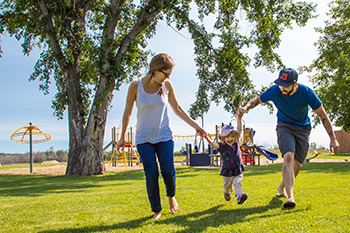Shelter in place is the practice of going or remaining indoors during the release of airborne hazardous material, as opposed to evacuating the area.
Hazardous Material Release in the air
Unless the hazardous material is flammable, like natural gas, emergency response professionals recommend that you initially stay indoors (shelter in place) until you receive instructions to leave. If the hazardous material is already around the building you are in, evacuation may not be safe since you would have to move through the hazardous material. Your building can help protect you -- shelter in place. If an evacuation is ordered, move to an area not affected by the hazardous material.
Things to do to shelter in place
- Go indoors and stay there.
- Close all outside doors and every door inside the building.
- Close all windows.
- Do not use bathroom vents or kitchen vents.
- Set thermostats so air conditioners, furnaces and hot water heaters will not come on.
- Do not use fireplaces. Close all dampers.
- Do not operate clothes dryer.
- Shelter in an inside room away from windows and doors if possible.
- Reduce or avoid smoking as it contaminates the air.
- Do not leave the building until told to do so.
- Stay tuned to local television or radio for information.
- Do not use the telephone; you may tie up the phone lines.
Things to do for added protection
- Seal the cracks around the doorway with wide tape and a rolled-up damp towel at the floor space.
- If there is a window, tape a piece of plastic over the window to seal it.
- Be prepared ahead of time by cutting a piece of plastic to the window size and storing it and some tape in your shelter in place room.
It is imperative that you stay indoors, especially if you see a cloud, vapour, or smoke from the hazardous material outdoors or you can smell it indoors. You will be safer inside. Shelter in Place has been shown to be a safe response to a hazardous material release of 3 hours or less. Our well weather-stripped buildings slow the movement of air into the buildings and any hazardous material that does enter is weakened when it mixes with the indoor air.
Things to do if you are in a vehicle and encounter an airborne hazardous material release
- Move away from the "danger area" and avoid visible clouds.
- Turn on your radio and follow all instructions from emergency services personnel. If it is a flammable material you will be required to shut off your vehicle and evacuate the area.
- Close all windows and air vents. Shut off the heater or air conditioner so that it is not blowing air.
- In most cases you are safer to drive from the area than to try and wait it out in a vehicle.
- If you cannot drive out of the "danger area", shut off your vehicle and wait with the radio on. Turn on your hazard lights and use your horn and headlights to attract attention.







